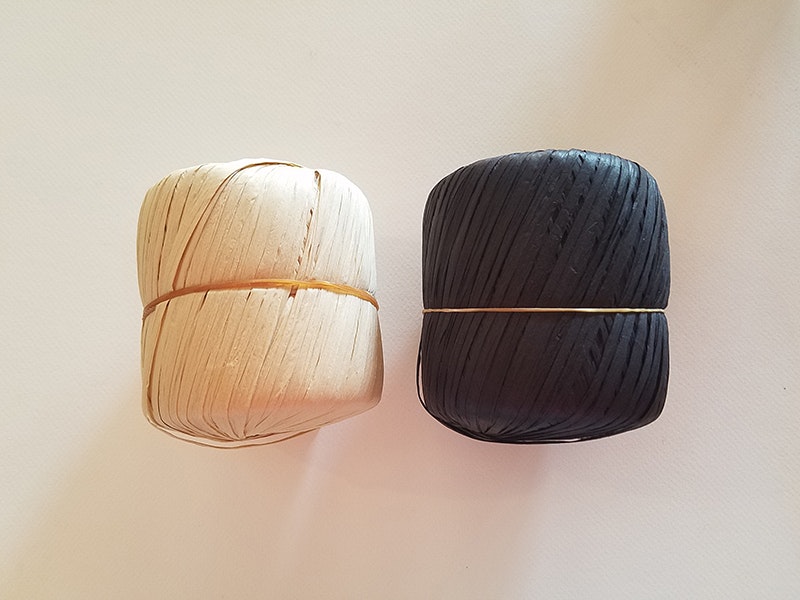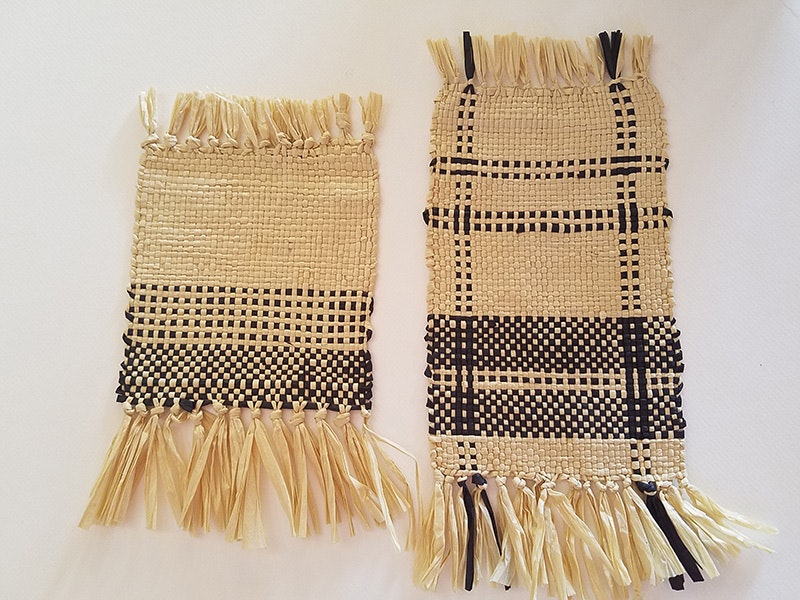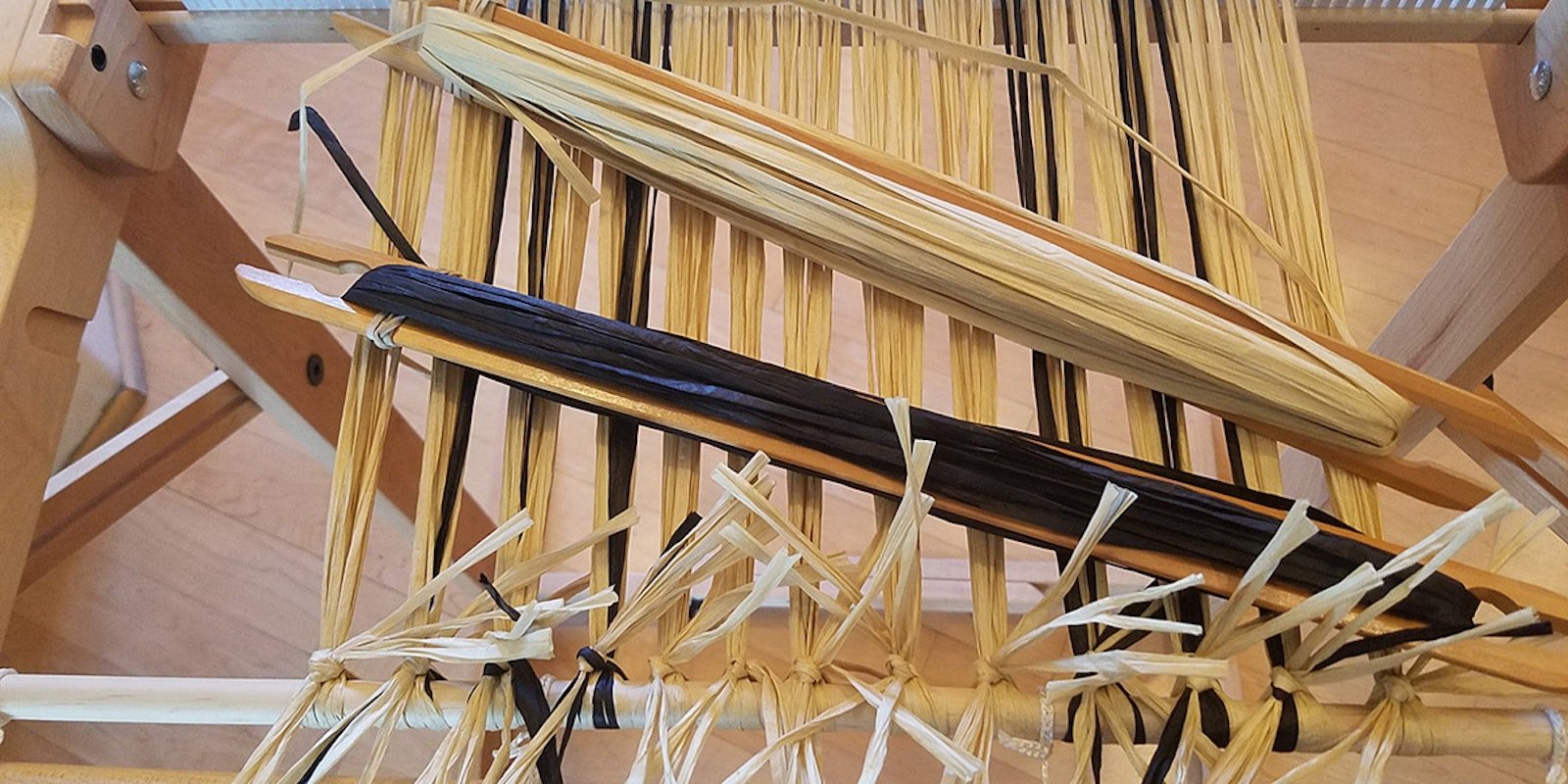This past weekend I did something I’ve wanted to do for a while: I wove with raffia. In March 2019, while attending TNNA (The National Needlearts Association) in Cleveland, I saw several yarn companies selling raffia. This wasn’t the kind of raffia that people made macramé purses with in the 60s but a new kind of raffia sold in balls with lengths of 99 yards rather than 15 feet.
The raffia was so intriguing that we asked Kate Lange-McKibben to test drive Ra Ra Raffia from Wool and The Gang for our Yarn Lab in the March/April 2020 issue. She did and her results are fabulous. I was afraid she might hesitate to put raffia in the warp but she didn’t, and based on her observations it worked fine.
I have a few balls of naturally colored Yashi raffia, a yarn sold by Universal Yarns. Before seeing Kate’s results, I was hesitant to put it on a loom so I crocheted a little bag and a little mat, all the while wanting to weave with it. Finally last week I read her article, ordered some black raffia, and started planning a placemat project.
Today, raffia comes in balls like these that hold close to 100 yards. Note the rubberbands that keep order!
Yashi is slightly different from Ra Ra Raffia, so I knew couldn’t simply rely on Kate’s explorations and instead needed to sample. I started with a 5" wide warp on my rigid-heddle loom with an 8-dent heddle. It was quite an education and I know I still have more to learn. Mostly what I’ve learned so far is that raffia is very much like paper and as such needs to be handled differently than ordinary yarns in the following ways:
• Rather than using a threading hook, I found it was better to simply thread with my fingers to avoid splitting the strands.
• It may seem like paper when you are threading, but when you are winding on, raffia seems more like straw. I think misting it, keeping it under tension, and using short rather than long warps can all help tame this yarn in the warp.
• Hemstitching by going through the woven cloth didn’t look as good as keeping the knots on the end.
• The sheds were slightly narrow because of the inelasticity of the raffia, but it was manageable if I advanced frequently and keep my tension taut.
I cut off my first sample and introduced a few ends of black to see how they looked, and then tried a few different color-and-weave ideas before cutting off.
My first sample (on the left) showed me how weaving with raffia might be. In the sample on the right, I added some ends of black raffia and tried some design ideas and hemstitching. I washed both and there was no dye release.
I love how raffia looks woven and I’m willing to learn how to use it. I’m working on my placemat project now. I put on a 60" warp. If all goes well, you’ll see my results in the March/April issue of Handwoven. Wish me luck!
Weave well,
Susan

